
Sir Anthony van Dyck was a Flemish Baroque artist who became the leading court painter in England after success in the Spanish Netherlands and Italy.

Simon Vouet was a French painter who studied and rose to prominence in Italy before being summoned by Louis XIII to serve as Premier peintre du Roi in France. He and his studio of artists created religious and mythological paintings, portraits, frescoes, tapestries, and massive decorative schemes for the king and for wealthy patrons, including Richelieu. During this time, "Vouet was indisputably the leading artist in Paris," and was immensely influential in introducing the Italian Baroque style of painting to France. He was also, according to Pierre Rosenberg, "without doubt one of the outstanding seventeenth-century draughtsmen, equal to Annibale Carracci and Lanfranco."
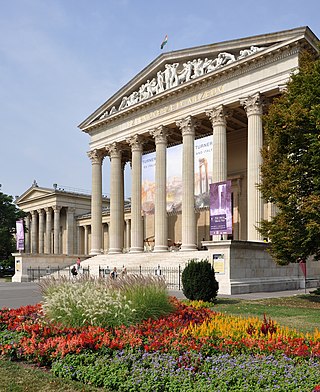
The Museum of Fine Arts is a museum in Heroes' Square, Budapest, Hungary, facing the Palace of Art.

Justus Sustermans, Joost Sustermans or Suttermans, his given name Italianised to Giusto, was a Flemish painter and draughtsman who is mainly known for his portraits. He also painted history and genre paintings, still lifes and animals.
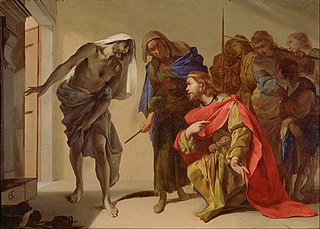
Bernardo Cavallino (1616–1656) was an Italian painter and draughtsman. He is regarded as one of the most original painters active in Naples during the first half of the 17th century.

Nicolas Régnier (1591–1667), known in Italy as Niccolò Renieri, was a painter, art dealer and art collector from the County of Hainaut, a French-speaking part of the Spanish Netherlands. He is often referred to as a Flemish artist because this term was often used to designate people from the Spanish Netherlands. After training in Antwerp, he was active in Italy where he was part of the international Caravaggesque movement. His subjects include genre scenes with card players, fortune tellers, soldiers and concerts, religious scenes, saints, mythological and allegorical scenes, and portraits. He also painted a few scenes with carnivals.
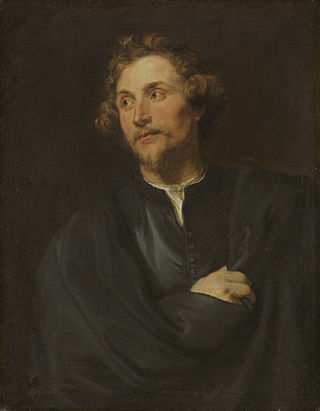
Georg Petel or Jorg Petel was a German sculptor and a virtuoso ivory carver. His work marks the beginning of Baroque sculpture in Germany.
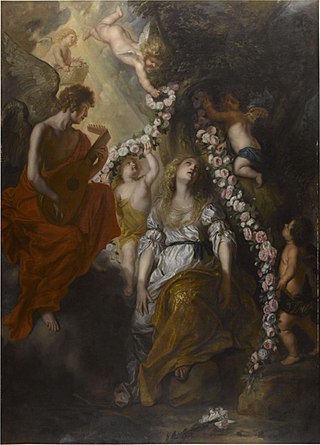
Theodoor Boeyermans, Theodor Boeyermans or Theodor Boeijermans was a Flemish painter active in Antwerp who painted Baroque history paintings and group portraits informed by the tradition of Peter Paul Rubens and Anthony van Dyck.

Sir Peter Paul Rubens was a Flemish artist and diplomat. He is considered the most influential artist of the Flemish Baroque tradition. Rubens' highly charged compositions reference erudite aspects of classical and Christian history. His unique and immensely popular Baroque style emphasised movement, colour, and sensuality, which followed the immediate, dramatic artistic style promoted in the Counter-Reformation. Rubens was a painter producing altarpieces, portraits, landscapes, and history paintings of mythological and allegorical subjects. He was also a prolific designer of cartoons for the Flemish tapestry workshops and of frontispieces for the publishers in Antwerp.

Justus van Egmont or Joost van Egmont was a painter and a tapestry designer during the 17th century. After training in Antwerp with Gaspar van den Hoecke and working with Anthony van Dyck, van Egmont also worked in Peter Paul Rubens' workshop. He moved to France in 1628 where he was a court painter for the House of Orléans. In France he helped to found the Académie de peinture et de sculpture. He later returned to Flanders where he worked in Antwerp and Brussels. He is mainly known for his portrait paintings, although he also painted some history subjects, and produced designs for five different tapestry series.

Deodat del Monte, Deodat van der Mont or Deodatus Delmont was a Baroque painter, architect, engineer, astronomer, and art dealer who was part of the inner circle of Peter Paul Rubens.

Isabella Brant, a portrait drawing, was executed in Antwerp around 1621, by Flemish artist and diplomat, Peter Paul Rubens (1577–1640). Brant (1591–1626) was Rubens' first wife and modelled for some of his portraits until her untimely death in 1626. The portrait is drawn in black and red chalk with white heightening on brown wash paper.

Cornelis van der Geest was a spice merchant from Antwerp, who used his wealth to support the Antwerp artists and to establish his art collection. He was also the dean of the haberdashers guild.

Frans Geffels, known in Italy as Francesco Geffels, was a Flemish painter, printmaker, architect, stage designer and designer of ephemeral structures for solemn and festive occasions. After training in his native Antwerp, he was mainly active in Mantua, where he was prefetto delle fabbriche to the Duke, a role that gave him the direction of the artistic and construction activities undertaken by the Ducal court. He worked also on projects for the local aristocratic class of Mantua. In addition, he completed projects for the Liechtenstein princes and for the imperial court in Vienna.
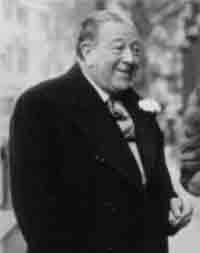
Count Antoine Seilern was an Anglo-Austrian art collector and art historian. He was considered, along with Sir Denis Mahon, to be one of a handful of important collectors who was also a respected scholar. The bulk of his collection was bequeathed anonymously to the Courtauld Institute of Art. Known as the "Princes Gate bequest", most of it is on display at the Courtauld Gallery in London.

HelenaFourment was the second wife of Baroque painter Peter Paul Rubens. She sat for a few portraits by Rubens, and also modeled for figures in Rubens' religious and mythological paintings.

Theodosius and Saint Ambrose is a painting by Peter Paul Rubens, with assistance from his main pupil Anthony van Dyck, executed c. 1615–1616. It is now in the Kunsthistorisches Museum in Vienna. Rubens created the preparatory drawing, with the painting almost entirely done by van Dyck, who painted his own similar version of the subject a few years later. In the Rubens version, the architectural background is less defined, Theodosius is bearded and the spear and halberd in van Dyck's own version are omitted.

The Vision of the Blessed Hermann Joseph or The Mystical Engagement of the Blessed Hermann Joseph to the Virgin Mary is a 1629-1630 painting by the Flemish Baroque painter Anthony van Dyck.

The Martyrdom of Saint Andrew is a 1628 painting by Jusepe de Ribera. It depicts the martyrdom of Saint Andrew, one of the Twelve Apostles.

The Ca' Dolfin Tiepolos are a series of ten oil paintings made c.1726–1729 by Giovanni Battista Tiepolo for the main reception room or salone of the Palazzo Ca' Dolfin, the palazzo of the patrician Dolfin family in Venice. The paintings are theatrical depictions of events from the history of Ancient Rome, with a typically Venetian emphasis on drama and impact rather than historical accuracy. They were painted on shaped canvases and set into the architecture with frescoed surrounds.




















